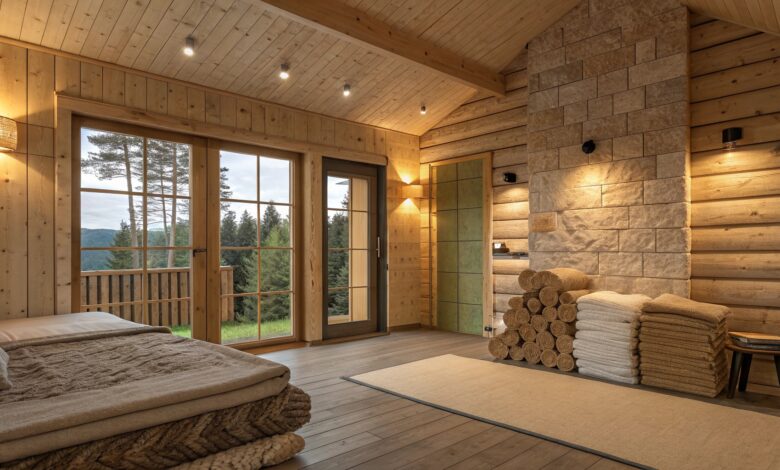Wollmatten: The Natural Solution for Insulation and Comfort

Wollmatten: The Natural Solution for Insulation and Comfort brings the power of wool-based materials into modern construction, interior design, and sustainable living. These eco-friendly mats offer superior thermal performance, sound absorption, and comfort while being renewable and biodegradable. Designed to balance warmth and breathability, wollmatten are ideal for homes, offices, and eco-buildings. Learn how these natural insulation products outperform synthetic options in durability and energy efficiency. Discover why architects and homeowners worldwide are turning to wool-based solutions for sustainable comfort.
Stay tuned with us we will talk about Wollmatten: The Natural Solution for Insulation and Comfort.
What Are Wollmatten?
Wollmatten, or wool mats, are insulation and padding materials made primarily from natural sheep’s wool. They are used in construction, upholstery, and even packaging to provide warmth, soundproofing, and environmental sustainability.
Unlike synthetic insulators like fiberglass or foam, wollmatten are biodegradable, moisture-regulating, and naturally resistant to mold and pests. They are crafted through a process that compresses cleaned and carded wool into sheets or rolls, creating dense layers ideal for temperature and acoustic control.
These mats combine functionality with environmental responsibility—an appealing choice for those aiming for a greener lifestyle or eco-certified building projects.
Benefits of Using Wollmatten
Wollmatten have gained popularity because they provide an unmatched blend of performance, comfort, and sustainability.
Key Benefits Include:
- Natural Insulation: Wool fibers trap air, providing excellent thermal resistance.
- Moisture Regulation: Absorbs humidity and releases it when dry, keeping interiors balanced.
- Sound Absorption: The fibrous texture reduces echoes and noise pollution effectively.
- Non-Toxic: Free from harmful chemicals often found in synthetic insulators.
- Durability: Wool’s elasticity ensures long-term performance without degradation.
- Eco-Friendly: Renewable, compostable, and recyclable at the end of its lifecycle.
For homeowners and builders seeking a safe, comfortable, and sustainable material, wollmatten are a top-tier choice.
How Wollmatten Are Made
The production of wollmatten involves several eco-conscious steps to ensure quality and sustainability.
Manufacturing Process Overview:
- Wool Collection: Raw wool is sourced from sheep farms, often as a byproduct of shearing.
- Cleaning & Sorting: The wool is washed to remove grease and dirt.
- Carding: Fibers are aligned into layers using mechanical rollers.
- Felting or Needling: Pressure and movement bond fibers naturally, forming dense mats.
- Finishing: Mats are trimmed, rolled, and sometimes treated with natural lanolin for added resistance.
Each stage ensures that the natural properties of wool remain intact, creating a high-performance insulation product suitable for both residential and commercial applications.
Applications of Wollmatten
Wollmatten serves various industries beyond just construction. Their adaptability makes them ideal for different purposes.
| Application Area | Purpose | Advantages |
| Building Insulation | Wall, floor, and roof insulation. | Thermal and acoustic efficiency. |
| Furniture Upholstery | Cushions, sofas, and bedding. | Comfort, breathability, and resilience. |
| Automotive Interiors | Car seats and soundproofing. | Vibration damping and air regulation. |
| Packaging Material | Eco-friendly protective layers. | Biodegradable and shock-absorbing. |
| DIY Home Projects | Crafting, mats, or wall decor. | Aesthetic and sustainable use. |
This wide range of uses makes wollmatten a versatile material for homes, industries, and green projects.
Comparing Wollmatten with Synthetic Insulators
When compared to fiberglass or foam insulation, wollmatten stand out for their safety, sustainability, and comfort.
| Feature | Wollmatten (Wool) | Synthetic Insulators |
| Thermal Efficiency | Excellent | Good |
| Breathability | High | Low |
| Moisture Control | Natural regulation | Prone to trapping moisture |
| Lifespan | Long-lasting | Moderate |
| Environmental Impact | Biodegradable | Non-degradable |
| Health Safety | Non-toxic | Contains chemicals |
Wool-based insulation maintains a balanced indoor climate while preventing condensation—a problem often seen with plastic-based insulators.
Sustainability and Environmental Impact
One of the strongest advantages of wollmatten is their contribution to a sustainable environment.
Wool is a renewable resource that grows back every year, making it inherently eco-friendly. It requires minimal processing compared to synthetic materials, which reduces carbon emissions. Moreover, when discarded, wollmatten naturally decompose into the soil, enriching it with nutrients instead of polluting landfills.
Their production also supports rural economies by promoting sustainable sheep farming and local manufacturing. Choosing wollmatten contributes to circular economy principles where waste is minimized and natural resources are respected.
Maintenance and Longevity of Wollmatten
Maintaining wollmatten is simple, and their lifespan can easily exceed several decades if properly cared for.
Maintenance Tips:
- Regular Inspection: Check for moisture buildup or compression over time.
- Air Drying: If damp, allow the mats to air-dry completely.
- Avoid Harsh Chemicals: Cleaning should involve mild soap or dry vacuuming.
- Rejuvenation: Mats can be refluffed or replaced in sections if needed.
Because of wool’s natural resistance to mold and dust mites, wollmatten require far less maintenance than other materials, saving time and costs in the long run.
Wollmatten in Sustainable Architecture
Eco-conscious architects and builders increasingly prefer wollmatten for their projects.
Architectural Advantages:
- Supports LEED and Passive House standards.
- Enhances indoor air quality by absorbing pollutants.
- Ideal for low-energy or zero-carbon homes.
- Complements wood and stone architecture aesthetically.
By choosing wollmatten, designers achieve both function and form—improving insulation performance while maintaining a natural look that blends seamlessly with sustainable design philosophies.
Common Myths About Wollmatten
Despite their growing popularity, several misconceptions surround wollmatten. Let’s clear them up:
- Myth 1: “Wool insulation causes allergies.”
Fact: Wool is hypoallergenic when cleaned and processed properly. - Myth 2: “Wool burns easily.”
Fact: Wool is naturally flame-retardant and self-extinguishing. - Myth 3: “Wollmatten attract pests.”
Fact: The natural lanolin in wool repels insects like moths. - Myth 4: “Wool mats are too expensive.”
Fact: While the upfront cost is higher, the energy savings and lifespan make them cost-effective.
Understanding these facts helps consumers make informed decisions about using wollmatten in their spaces.
Conclusion
Wollmatten represent the perfect blend of nature, technology, and sustainability. Their natural insulation properties make homes energy-efficient and comfortable year-round. Unlike synthetic materials, they regulate humidity, purify air, and decompose harmlessly at the end of life. They also support sustainable agriculture and ethical production. From residential buildings to furniture and automobiles, wollmatten have proven their worth across industries. With minimal maintenance, superior comfort, and undeniable eco-benefits, they are redefining insulation for the modern world. Choosing wollmatten isn’t just a design decision—it’s a commitment to sustainable living and long-term comfort.
FAQs
What are wollmatten made from?
Wollmatten are made from natural sheep’s wool compressed into durable mats for insulation and comfort.
Are wollmatten suitable for modern homes?
Yes, they are perfect for energy-efficient, sustainable, and eco-friendly modern homes.
Do wollmatten control humidity?
Yes, they naturally absorb and release moisture, maintaining balanced indoor air quality.
How long do wollmatten last?
With proper care, wollmatten can last for decades without losing their effectiveness.
Are wollmatten safe for people with allergies?
Yes, cleaned and treated wool is hypoallergenic and safe for sensitive individuals.



